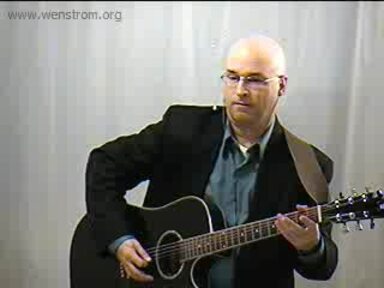Liberal and Conservative Views of Inspiration

Bill Wenstrom
Inspiration • Sermon • Submitted • 1:00:47
0 ratings
· 148 viewsLiberal and Conservative Views of Inspiration Lesson # 6
Files
Notes
Transcript
In 1799, in his work “On Religion,” Friedrich Schleiermacher rejected outright the cognitive approach of the Enlightenment by making the claim that theology was the study of the experience of God, and that the Bible was the record of religious experience of a particular group of people.
This view challenged traditional views of inspiration as well as in the case with modernity.
Schleiermacher considered a religious experience as “a feeling of absolute dependence” and not the communication of substantive fact.
Other liberal theologians viewed Scripture as having “varying degrees of ‘inspiration.”
They understood inspiration in terms of a heightened literary genius found in the writers of Scripture (Donald McKim, What Christians Believe About the Bible, 45).
Albert Ritschl and Adolf Van Harnack, continued to modernize approaches to the Bible.
Higher criticism would follow this by questioning the Bible’s authenticity, dating, and origins.
The most famous being Julius Wellhausen whose documentary hypothesis called into question the dating and authorship of the Pentateuch.
In 1835, David F. Strauss began the movement that is still around in the twenty-first century, namely the “quest for the historical Jesus,” which sought to get behind the suspected superstitious elements of the Gospel accounts and discover the “true” Jesus of Nazareth (Nichols and Brandt, Ancient Word, Changing Worlds).
Despite the challenge of modernity and higher criticism, the nineteenth and twentieth century had several conservative scholars uphold the inspiration of the Bible.
James Orr, Charles Hodge and his son A. A. Hodge, as well as B. B. Warfield were more than up for the challenge waged by those who rejected the inspiration of Scripture.
Orr leaned toward soteriological infallibility, while Warfield held to a verbal, plenary, view of inspiration.
Hodge and Warfield described inspiration as the “superintendence by God of the writers in the entire process of their writing” which resulted in the “absolute infallibility of the record in which the revelation, once generated, appears in the original autographs” (Hodge and Warfield, Inspiration, 6).
The verbal plenary view of inspiration held by Warfield and Hodge became a foundational tenet of American fundamentalism and the evangelical movement which would follow it.
This view regards the apostles and the early church to have believed likewise regarding inspiration while on the other hand others have suggested that the Bible has only ever been considered infallible and inerrant in matters of faith and practice or in other words, not in matters of history, geography, or science.
Thus, they believe that the original authors were inspired, but only intended those matters within the text that pertain to Christian instruction to be inerrant.
The Catholic Church has always maintained that God is the author of the Bible.
In the twentieth century, the Second Vatican council reaffirmed this by writing (in Dei Verbum): “The divinely revealed realities, which are contained and presented in the text of Sacred Scripture, have been written down under the inspiration of the Holy Spirit.” That is, “[t]o compose the sacred books, God chose certain men who, all the while he employed them in this task, made full use of their own faculties and powers so that, though he acted in them and by them, it was as true authors that they consigned to writing whatever he wanted written, and no more” (Dei Verbum, Catechism).
This view of inspiration produces their view of inerrancy: “Since therefore all that the inspired authors or sacred writers affirm should be regarded as affirmed by the Holy Spirit, we must acknowledge that the books of Scripture firmly, faithfully, and without error teach that truth which God, for the sake of our salvation, wished to see confided to the Sacred Scriptures” (Dei Verbum, Catechism).
However, this Catholic view differs from conservative views primarily in regards to interpretation: “The task of giving an authentic interpretation of the Word of God […] has been entrusted to the living teaching office of the Church alone. […] Yet this [teaching authority] is not superior to the Word of God, but is its servant. It teaches only what has been handed on to it. At the divine command and with the help of the Holy Spirit, it listens to this devotedly, guards it with dedication and expounds it faithfully. All that it proposes for belief as being divinely revealed is drawn from this single deposit of faith” (Dei Verbum, Catechism).
Karl Barth (1886–1968) was of the conviction that the Bible was secondary as revelation to the revelation in and through Jesus Christ, and that the Bible became God’s Word when God spoke through it.
Thus, we can see that although Barth held a high view of Scripture, his primary concern was to preserve the preeminence of Christ and the sovereignty of God.
Paul Tilich (1886–1965) believed in the inspiration of Scripture as mediator between revelatory events recorded in the Bible and the contemporary experiences of the reader (McKim, 106).
Liberation theologians do not have a high view of Scripture, but instead view it through the lens of oppressive systems, a “hermeneutic of suspicion,” and thus advocate for the overthrow of such systems (McKim, 134–138).
Process theologians understand all things, including God, as “in process” and thus as constantly changing and adapting to contemporary reality.
Scripture then, in this view, is one potential source that helps us to see our own story in the unfolding story of God (McKim, 114–115).
Feminist theologians view approach Scripture with a critical eye toward anything oppressive toward women, and are willing to reject those portions of Scripture that might foster the subjugation of women (McKim, 148).
Postmodernism challenges the notion that authorial intent (whether human or divine) is knowable and available to provide meaning.
Thus, postmodernism opposes both the interpretations of a “liberal” as well as those of a “conservative” as the product of reading too much into the text.